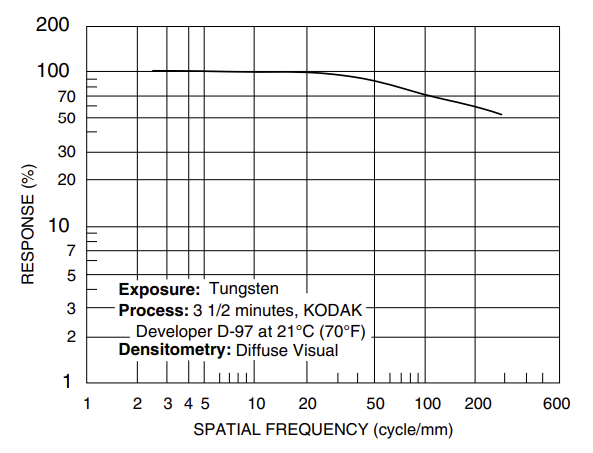Thank you @cpixip well said. I agree with many of the points, and would highlight this one in particular.
I would also add, that your extraordinary work in postprocessing validates trade-off between resolution and multi-exposure/bit depth for the resulting output file.
This is a valid point. The Recommended Practice description:
The test film shall be produced as a camera original film photographed on high-contrast, high-definition, positive-type motion-picture stock made in accordance with American National Standard for 16-mm Motion-Picture Film Perforated 8-mm Type R, 2R, ANSI PH22.17-1982.
Not sure how available was, but high contrast film like Eastman 5363 for example, would have supported the additional resolution. Below from the datasheet:
70% response for 120 cycles/mm, approximating for 120 lp/mm = 240 SMPTE lines/mm.
Black&White
I missed it completely in the post above. There is a lot B&W original film, it is worth adding it to the resolution consideration.
Kodak 7302 in this case, 10% response is about 150 cycles/mm, almost double the response of Kodachrome.
Using this resolution with the prior pixel calculations for Nyquist, 2370 x 1269 for the full width-height of Super 8.
B&W is also abundant in 16mm camera original film, and at least from the film perspective, higher than 4K may be justified. Always with the caveat of limitations other than the film itself, such as the quality of lens used in the exposure.

